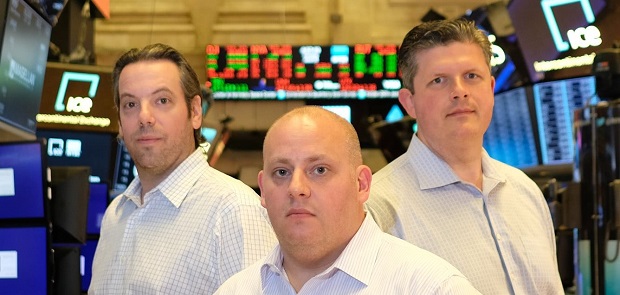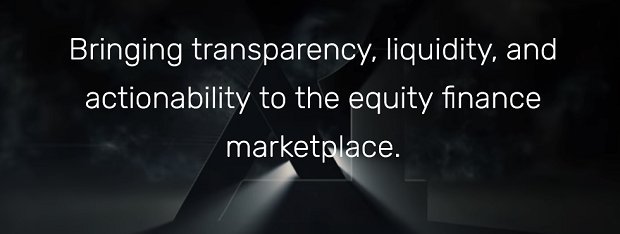Below is our recent interview with Brandon Neer, Harris Bock, and Jason Lefkowitz Co-Founders of Delta One, a firm dedicated to bring transparency, liquidity, and actionability to the institutional equity finance marketplace.

Q: How did Delta One get started?
BN: A mutual friend introduced Harris and me around the middle of 2017. We met in a dank, dive bar in Union Square after work, and by the end of our first round of drinks we were not only fast friends, but it was immediately obvious there was a business fit. I had already started working on the underpinnings that would become Delta One, and he was the CEO of a broker-dealer that specialized in listed stock options brokerage that catered to the intended client base of the technology.
HB: Demand for our high touch brokerage service had started to run into the limits of how many trades we could handle in a given day, and the automated solutions that were available were really not suitable for our client base. Clearly there was an opportunity for innovation in our business, and it wasn’t at all obvious what that was until I met Brandon. He had an idea about how you could solve a lot of the problems equity finance professionals were facing, but he needed a fresh set of eyes on the problems and the perspective we could provide.
Q: What were those problems they were facing and how do listed stock options fit into the picture?
JL: Listed stock options can be used by institutional investors to enhance stock lending revenue and improve lending rates. A put and call combination with the same strike and expiration can be traded alongside the underlying stock, and the package will have very similar economics to term stock loan. Investors call these synthetic stock loans. As career options traders we have all watched this use case explode over the last 10 years. Yet, while the stock loan market usually exceeds $1.7 trillion in total size, the total monthly synthetic loan volume rarely exceeds $35 billion in total notional, not all of which is motivated by stock lending.
BN: Options bring something very important to the table: transparency and liquidity. Investors looking to use them face some challenges to get the desired results however. The level of precision required in portfolio finance is extremely high. The difference between a profitable trade and an unprofitable trade is often measured in basis points. The existing quotation infrastructure in the United States is wholly inadequate for this purpose. Clearly another pricing mechanism was required and we sought to address this problem.
Q: How does your technology solve these problems?
HB: It is really a two-pronged solution: education and technology. Some of the smartest minds in the stock loan business are not always experienced option traders. In fact, they usually aren’t. Our platform gives users very powerful tools for pricing and trading synthetic loans but we also educate them on the optimal use cases. We would never expect everybody to be experts on pricing models, but we certainly give them powerful tools to make an informed decision. We give our clients insight and confidence in the opportunities available to them in the options market.
JL: Using options to synthetically create stock loans is easy in theory, but pricing and trading them, not so much. Before Delta One came along, an investor looking to trade a synthetic loan might have the feeling of looking for a needle in a haystack, when they are not even sure they are looking in the right haystack or even if there is a needle to be found at all.
Q: What do you mean by needle in a haystack?
HB: When I first started my career in the late 90s, every stock option that existed in the U.S. had to trade in a single, physical location. Option investors had to go to that single location to do a trade. So, if you were looking for a synthetic loan, there was only one place to look. Today with the advent of multi-exchange listing and electronic trading, option liquidity has spread out among 16 exchanges, dealer desks, inter-dealer brokers, and complex order books. The options market has become so fragmented that a stock lender and a borrower would have a very hard time finding each other. Delta One was created to address this problem.
HB: The peer to peer nature of Delta One has really benefited all users. At its core Delta One is a matchmaker. Lenders and borrowers can easily find each other if they are looking to be found. Transparency, liquidity, and actionability are the core values of the system. Our technology gives users a vast array of information to process decisions across a large number of securities simultaneously.
Q: What makes the culture of Delta One Unique?
BN: The enemy of innovation is a closed mind. We collaborate on every decision that’s made within Delta One, whether it’s a technological, analytical, or UI related. When I first met Harris, I certainly had some preconceived notions about what the marketplace needed that turned out to be wrong. Keeping an open mind has led to some of the best features of the platform. Also, we were fortunate to build an amazing advisory board with very high caliber people. We had some complex challenges to solve. Having the right people in the room to solve them was paramount.
JL: We have taken an analytical approach in our decision trees, but utilizing human capital has been very important for our products. We are constantly asking our employees, users, and advisors for ideas on features or analytics that could be useful. Our development cycles are measured in weeks, not months or years like larger organizations. More often than not, if users suggest features, and they make sense, we develop and integrate them.
Q: What is the long term Goal for Delta One?
HB: We have a clear focus of our mission, yet imperfect visibility into the future. Growing the Delta One user base will always be the goal, but we like to keep our steps agile so having a rigid long-term plan would be suboptimal. The overarching theme of our strategy discussions is that our products can make small and large adjustments to changes in the marketplace.
BN: Listening to users and using that feedback to improve user experience will always be a core goal. However, our user’s needs will change over time, so to speculate on next year or the year after would not be fruitful. The marketplace changes quickly, and one of our greatest strengths is our ability to adapt to it to provide users with the experience they expect and need from Delta One.
Disclaimer:
The information contained within this document is not, and is not intended to be, trading or investment advice or a recommendation that any security or investment strategy is suitable for any person. Trading securities can involve high risk, including the loss of any funds invested. Transaction cost may be significant in option strategies that call for multiple purchases and sales of options. Options are not suitable for all investors. Prior to trading options, please read the Characteristics and Risks of Standardized Options and the Risk Disclosure for Futures and Options found at https://www.theocc.com/about/publications/character-risks.jsp
Supporting documentation for any claims (including any claims made on behalf of options programs or the options expertise of sales persons), comparisons, recommendations, statistics, or other technical data is available up on request.
Activate Social Media:


 Recommended:
Recommended: 